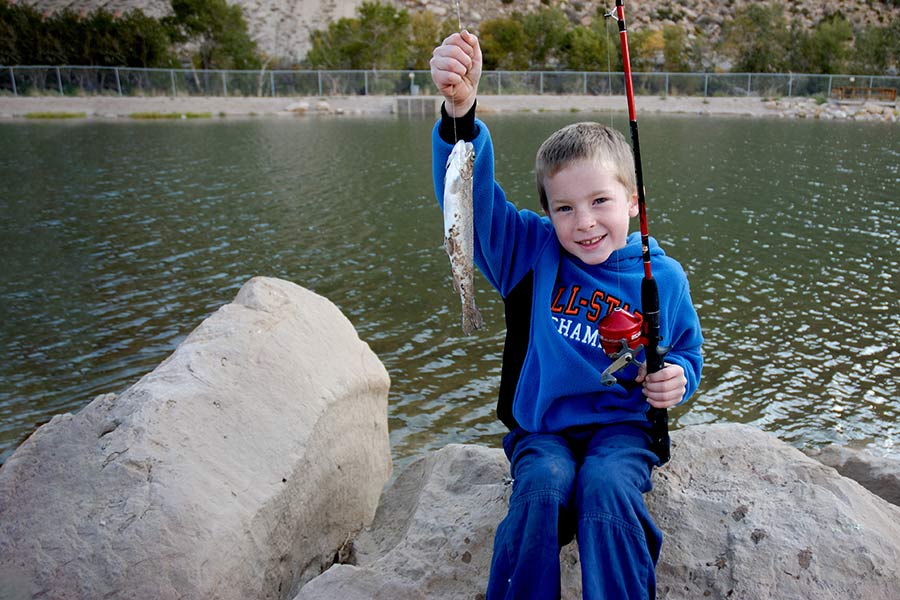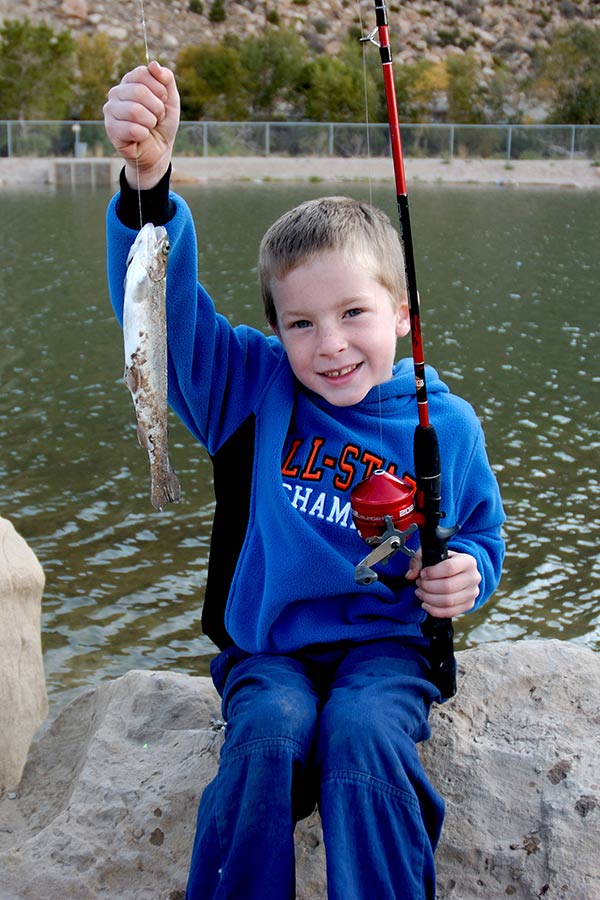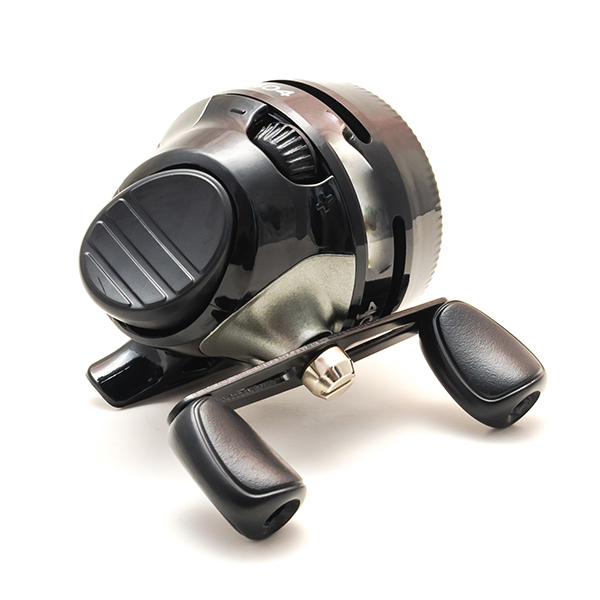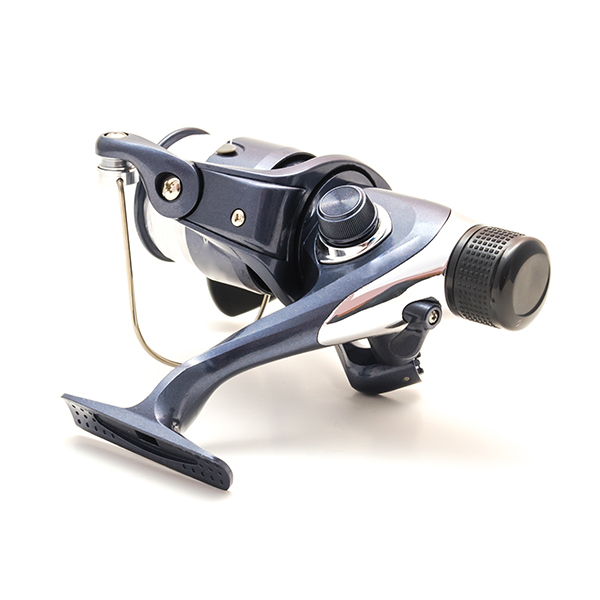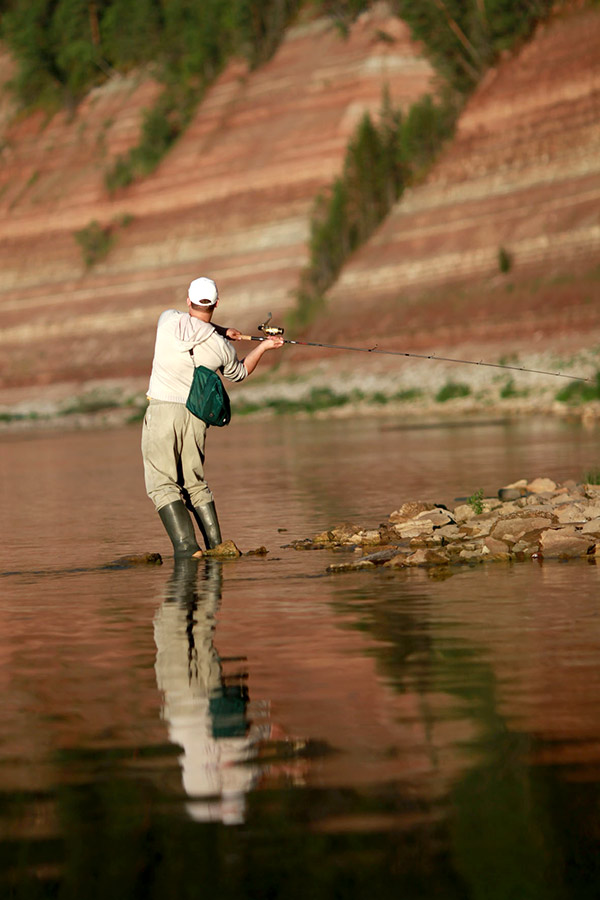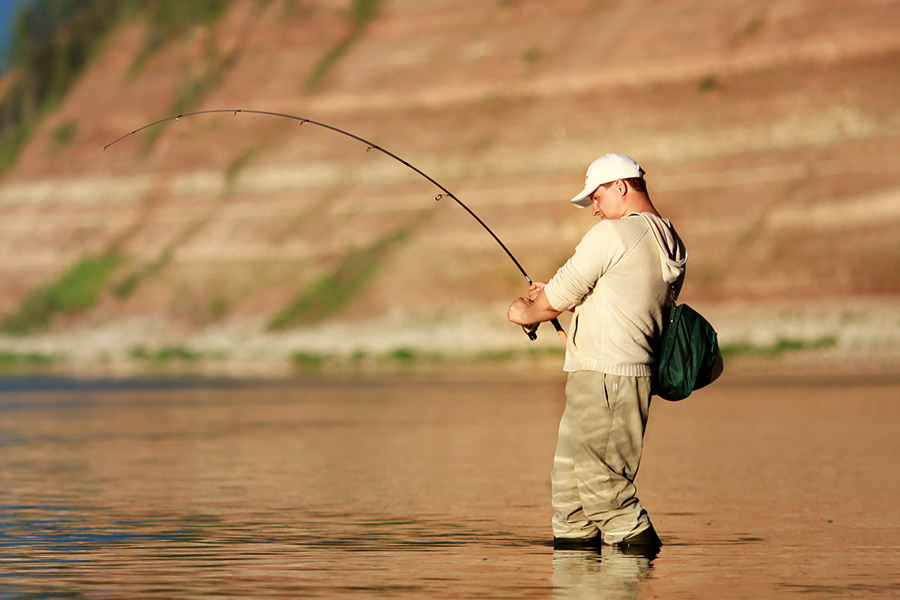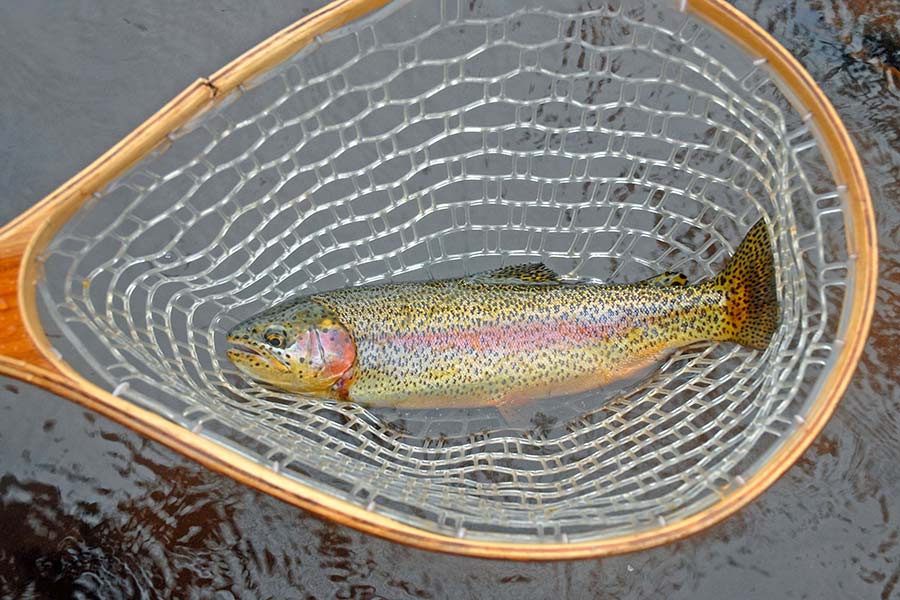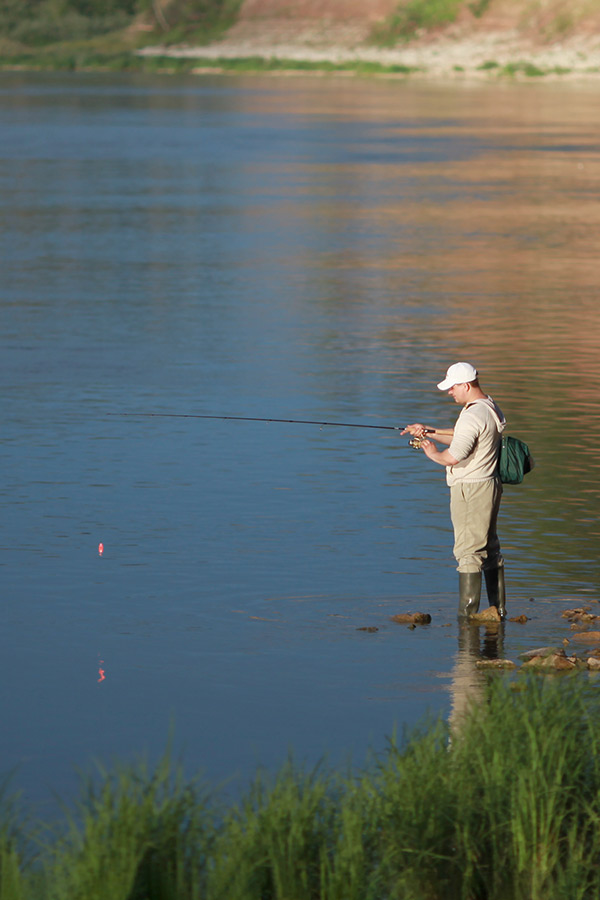Learn to fish: casting line and catching fish
How to cast a line, set the hook, reel fish in, and tips for releasing or harvesting fish
Chris Crockett and Michael Packer
You are almost there: You have planned your fishing trip, picked out a rod and reel combo, figured out lure or bait selection, and now you are on the water!
Understanding a few basic techniques will help you be successful casting a line, figuring out if you have a fish on the hook, reeling it in and what to do once you've got a fish in your net.
And remember, you must have a valid fishing license (for all anglers 12 years of age and older), whether you intend to harvest fish or release them.
How to cast: getting your line out to catch a fish
In order to catch fish, we need to get our hook or lure out to the fish. Understanding the fundamentals of how your fishing reel works is a great place to start.
When fishing at most Utah waters, there are two rod and reel combo styles most people will use: spincast reels and spinning reels. With a little practice, either reel type is a good choice. Once you learn how to cast with one, you can quickly pick up how to cast the other.
Let's walk through the steps of casting for both reel styles.
Spincast reels have an enclosed reel case, and use a push button to cast the line
Spincast reels are great for kids and beginners. They have an enclosed reel case to keep line tangles and snags to a minimum. They also utilize a push button to grab and release the line during casting, making it easy for most people to pick up the casting technique and get fishing right away.
Practice casting a spincast reel:
- Hold the rod in your dominant hand, in front of you at about waist level. Grasp it so that the reel is resting/positioned above the rod, and the push button is facing up toward you. The hook/bait or lure should be hanging 1 to 2 feet below the end of the rod tip.
- With the same hand, depress the push button with your thumb (thumbs if two hands are needed for young anglers). Keep the button depressed to prevent the line from unspooling.
- Position the rod tip backward so the tip and line sweeps up over your dominant shoulder to the 10 o'clock position (the reel will be even with or just above your ear). Bring it forward swiftly, pointing the rod tip at your desired target/area in the water. As you sweep the rod forward over your shoulder, release your thumb(s) off the button at the one o'clock position so the weight of the hook/bait or lure pulls the line off the reel.
- Once an adequate amount of line has left your reel, crank the reel handle forward (away from you) until you hear an audible "click" that indicates the reel has engaged.
Spinning reels have an open or exposed reel, and you open and close the bail to cast
Spinning reels are also a good option for beginners, and have the advantage of being able to cast farther than many spincasting reels. They require the angler to open and close the bail — while snagging the line with a finger on the other hand — to cast and engage the line, rather than utilizing a single push button.
Once you've got the two-handed technique down, spinning reels are a great all-purpose rod and reel combo that can be used in many fishing situations. Hold the rod in front of you at about waist level, grasping it so that the reel is resting/positioned below the rod. The stem (skinny piece of material connecting the reel to the reel seat) of the reel should rest naturally between the fingers of one hand. The hook/bait or lure should be hanging 1 to 2 feet below the end of the rod tip.
- With the same hand that is holding the stem, hook/hold the line with your forefinger, and use your supporting hand to open the bail (flip open the thin metal bar affixed to the spool). Continue to hold the line with your forefinger; your fishing line is now primed/ready to be cast off of your reel.
- Position the rod tip backward so the tip and line sweeps over your dominant shoulder to the 10 o'clock position, and then bring it forward swiftly, pointing the rod tip at your desired target/area in the water. As you sweep the rod forward of your shoulder, release the line with your forefinger at the one o'clock position so the weight of the hook or lure pulls the line off the reel.
- Once the line has left your reel — and you've hopefully reached your target — use your supporting hand to close the bail (flip the thin metal bar affixed to the spool back over the spool), and you're ready to reel and retrieve your fishing line.
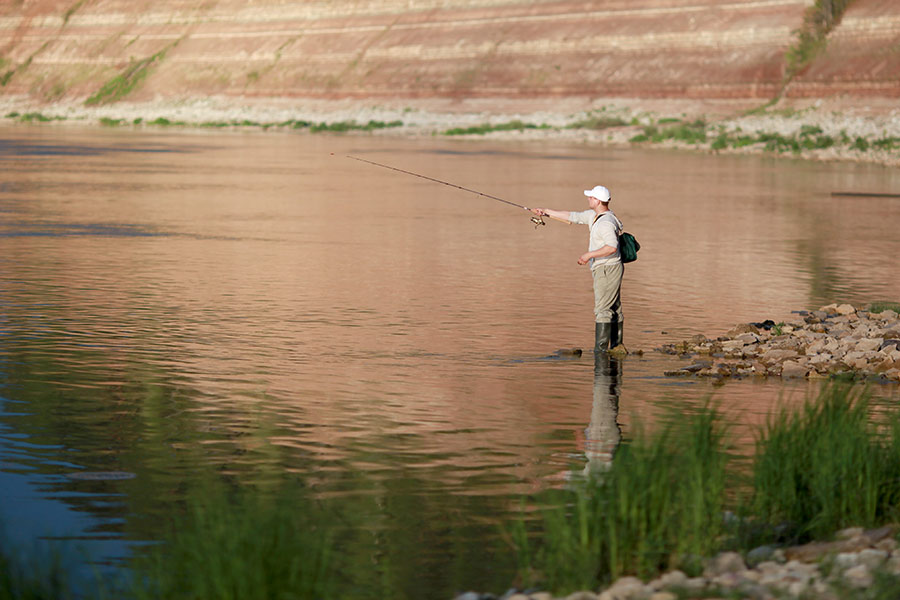
Learn more about how to use both of these rod and reel combos by watching this video.
New to fishing?
- See the Utah Fishing Guidebook (guía en español, Guía de pesca de Utah) for the state's fishing rules and regulations, including what kind of fish you can catch in Utah, and how many fish you can keep.
- Buy a fishing license (ages 12 and older)
- Find places to fish near you
- Fishing access for anglers with physical challenges
Watch a short video about the basic gear you'll need to get started fishing.
How to tell if you've got a fish on the line
Pay attention! No matter what you are using for bait or a lure, it's important to pay attention. Watch your rod tip, line or bobber for movement that might suggest a fish is tugging on your line. You need a firm enough grip on the rod that if a fish does strike it won't be pulled from your hands, but it should also be light enough that you can feel the often gentle tug of a fish biting. If you are casting a lure, pay attention to any bumps or taps felt throughout the rod, and watch for movement of your line. Either can indicate that a fish has bit the lure.
Setting the hook
Now, set the hook! Your hook set style will vary depending upon the hook and lure type you are using. If you are using a traditional J-hook or lure you will quickly reel up any slack in the line, and then swiftly jerk the rod tip up and back to drive the hook firmly into the fish's mouth. Please remember that small, delicate mouth fish like trout and panfish often don't require a lot of pressure to set the hook (too forceful a hook set can break light line) but larger fish (or larger hooks) may require more force.
If you are using circle hooks, the hook set is a little different. Circle hooks are designed to almost set themselves. You can simply quickly begin to reel the fish in to set the hook, or steadily and firmly pull back on the rod to drive the hook home. Circle hooks can also be used effectively with rods placed securely in rod holders and simply allow the fish to "run" and set the hook themselves.
Reeling in a fish
Maintain tension and keep your rod tip up. If you have a fish on your line (or think you do) keep tension on the line by reeling consistently and keeping your rod tip up and slightly bent with tension from the weight of the fish. A fish can easily escape if the line goes slack, allowing them to throw or wiggle out of the hook. Sometimes, fish will actually swim toward you, so keep reeling till you catch up with the fish and can apply tension. Use your fishing rod like a shock absorber to keep adequate tension on the line and take on the fight of the fish.
Reel in the fish in a consistent controlled manner. If the fish is taking drag (pulling line out of your reel) it's typically best to wait for a pause in the fight and then reel line in when the fish isn't taking drag. (Note: If it feels like fish are taking out line without any resistance — or on the other hand, it feels like no line is going out and your line snaps with any pressure at all — you may need to set the drag on the reel.)
Use your rod to put pressure on the fish and then reel in the line, and repeat as needed.
Stay calm and be patient. Don't forget it may take a while for the fish to tire and for you to be able to reel it in close to shore. Larger fish may take several runs before tiring. Don't forget to use your rod to place pressure on the fish and move it away from obstructions.
Nets are key to a successful catch
Use a net! Having a properly sized net to gently scoop the fish significantly increases your likelihood of landing a fish, and reduces the chances of injury to fish you are intending to release. Often, fish will break the line or throw the hook if you try to grab the fish with your hand or drag it onshore. Using a net will also allow you to keep the fish in the water while unhooking it and avoid it being injured by flopping on dry land.
Catch and release vs. catch and keep
Ethical and legal harvesting of fish is a great way to provide a tasty meal for your family, but there are some days (or situations) where you will need to safely release a fish to fight another day.
Remember, although all anglers 12 years of age or older need to have a valid fishing license, all regulations in the Utah Fishing Guidebook apply to anglers of any age, including all harvest and possession limits.
Practice good catch-and-release techniques
Other agencies and conservation partners like Take Me Fishing and Trout Unlimited have many great resources describing ethical catch-and-release practices. The biggest thing to remember is that you want to reduce the amount of time the fish is out of the water, and return it as undamaged as possible.
Here are just a few tips for a successful catch and release:
- Crimp down the barbs on hooks or lures using pliers. This usually makes it quicker and easier to remove the hook, and reduces possible damage to the mouth of the fish. Bonus: If you snag human flesh — which if you fish long enough is bound to happen at some point — a barbless hook is much less painful to remove. Keep in mind: The downside of this tip is that you are likely to lose more fish if you use barbless hooks.
- Use a net. Landing the fish with a net not only increases your chances of finishing a successful hookup, but it also allows you to minimize stress on the fish by keeping it submerged.
- Keep it wet. Sure, this one is a little redundant with the point just above, but even if you don't have a net, keeping a fish wet is key to its future survival. Make sure to wet your hands before handling a fish.
- Use the proper tools. A pair of long-nosed pliers, hemostats or other removal tool will help you remove the hook quickly and safely. (See this video for tips.)
- Firmly, yet gently, hold the fish with one hand while keeping it submerged in the net. Use your other hand to remove the hook.
- Stay safe. Avoid placing yourself in a position where the hook or a fish's spines may become embedded in you if the fish moves or thrashes.
- Remove the hook promptly and minimize handling time. Preferably, use pliers or a hook removal tool to apply steady pressure to back the hook out of the same path it entered. A slight twist or tap may help, but avoid excessive actions that may injure the fish. If the fish is hooked deeply with a single hook (common when using bait) it's often best for the fish to simply cut the line and avoid further injuring the fish.
- Revive the fish. After the hook has been removed, allow the fish a few moments in the net or gently cupped in your hands to recover before release. Keep it fully submerged in the water.
How to keep fish (and how to know which fish you're allowed to keep and how many)
Keep in mind that regulations vary by individual waterbody. Know the rules for harvesting different kinds of fish before you cast your line:
- The Utah Fishing Guidebook is available online in English and Spanish, or you can pick up a print copy at all DWR offices, license agents and many sporting goods stores all over the state.
- Some waterbodies have specific regulations which are listed starting on page 25 of the Utah Fishing Guidebook.
- The list of daily harvest limits is on page 7 of the Utah Fishing Guidebook.
- Check out the special rules for community ponds; there might be one right in your neighborhood!
- To accurately identify fish species, see descriptions and illustrations of Utah fish species beginning on page 48 of the Utah Fishing Guidebook.
Have these basics with you:
- Sharp knife or filet knife
- Ziplock bags, sealable storage bags
- Cooler with ice
If you plan to eat the fish you catch, you may opt to harvest your catch immediately. However, since this step can interrupt your fishing experience, you may want to try one of several methods for how to keep fish while fishing:
- Place the fish you catch on a stringer and keep it in the water. Make sure the stringer is secured to an immovable object to prevent losing your catch.
- Put your catch in a wire mesh or wicker basket, and keep it placed in the water. Ensure that the basket is secured to yourself (when wading) or to an immovable object to prevent losing your catch.
- Use a live well (for boat anglers).
- Use a bucket or cooler filled with water to create a temporary live well.
If you need any assistance understanding the rules, don't hesitate to contact one of our offices for any questions you may have.
Get started fishing!
- Learn to fish: how to tie basic fishing knots
- Learn to fish: planning ahead for success
- Learn to fish: lure and bait selection
- Video: how to release fish
- Learn more about fly fishing
- The basics of ice fishing
- More about fishing gear and tackle




